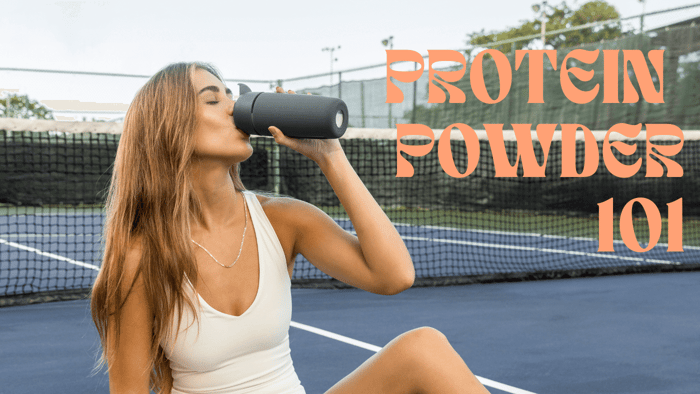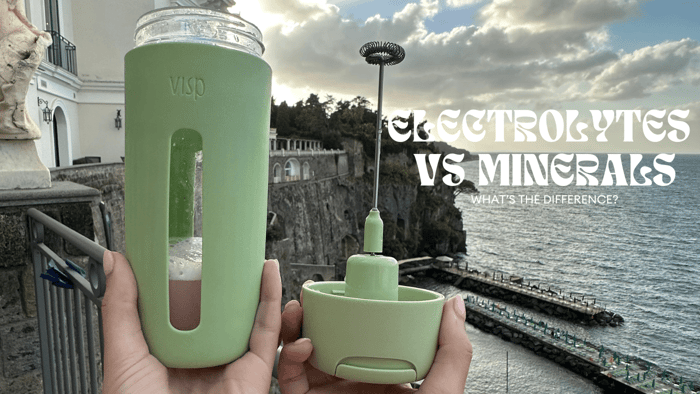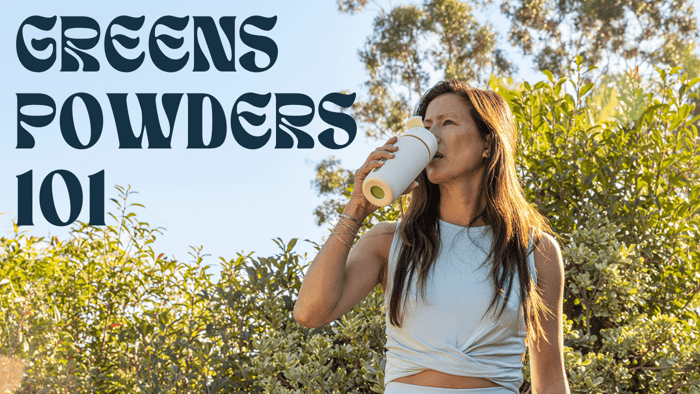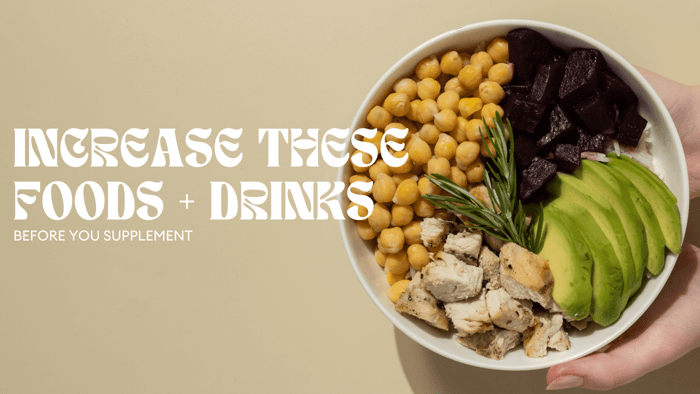Protein Powder 101: Everything You Need to Know
And Why the Elixir Mixer Is Your Perfect Protein Powder Shaker Replacement
Whether you’re new to fitness, striving for healthy weight management, or simply looking to add convenient nutrition to your diet, protein powders can be a game-changer. With countless brands, flavors, and sources on the market, it can also be downright confusing. Do you go for whey, casein, or plant-based blends? Do you need to worry about “complete” amino acid profiles? And once you’ve picked a product, how do you ensure your protein drink is smooth and clump-free?
In this detailed guide, we’ll walk you through the fundamentals of protein powder, the pros and cons of various types, how to incorporate them into your lifestyle, and—perhaps most importantly—why the Elixir Mixer might just be the best device for blending them all into silky perfection. By the end, you’ll understand exactly what “Protein Powder 101” entails, and you’ll be well-equipped to elevate your daily shakes to a whole new level.
1. What Is It, and Why Does It Matter?
Protein powder is a concentrated form of dietary protein sourced from either animals (e.g., dairy, eggs) or plants (e.g., peas, soy, hemp). After being extracted, isolated, or otherwise processed, this protein is turned into a fine powder that you can easily mix into shakes, smoothies, and even baked goods.
Why It Matters
- Protein is Essential: Protein is often called the “building block of life.” It’s critical for muscle repair, enzymatic activities, hormone production, and countless other bodily functions.
- Convenient Nutrition: For busy lifestyles, protein powder offers a quick solution to meet daily protein needs without cooking an entire meal.
- Dietary Gaps: If you follow specific eating patterns (like vegetarian, vegan, or lactose-free), protein powder can fill in the gaps where your diet might lack certain amino acids.
In short, protein powder can be a nutritional powerhouse—provided you choose wisely and use it effectively.
2. Common Types
When you step into a supplement store (or browse online), you’ll likely encounter these main categories:
Whey Protein
- Source: Derived from milk as a byproduct of cheese-making.
- Types: Whey Concentrate, Whey Isolate, and Whey Hydrolysate (differing in protein purity and processing).
- Benefits: Rapid digestion and absorption, a high concentration of essential amino acids (EAAs), and effective for muscle recovery.
Casein Protein
- Source: Also derived from milk but digests more slowly than whey.
- Benefits: Offers sustained amino acid release—commonly used at night to support muscle repair during sleep.
Egg Protein
- Source: Made from egg whites (albumen).
- Benefits: Highly bioavailable, lactose-free, and a robust amino acid profile.
Soy Protein
- Source: Derived from soybeans.
- Benefits: One of the few plant-based proteins that’s “complete,” containing all essential amino acids.
Pea Protein
- Source: Yellow split peas.
- Benefits: Hypoallergenic, often well-tolerated, and moderately high in essential amino acids.
Brown Rice Protein
- Source: Milled from brown rice.
- Benefits: Easy to digest, though slightly lower in certain amino acids like lysine.
Hemp Protein
- Source: Ground hemp seeds.
- Benefits: Offers omega-3 fatty acids and fiber, though slightly lower protein content per scoop.
Mixed Plant-Based Blends
- Source: Combination of pea, rice, hemp, or other plants.
- Benefits: A “complete” amino acid profile by blending different plant proteins.
Each type has its own flavor, texture, and digestion speed. Choosing one depends on factors like dietary restrictions, performance goals, and taste preferences.
3. Complete vs. Incomplete Proteins
Proteins are made up of amino acids, some of which the human body can’t produce on its own—these are called Essential Amino Acids (EAAs). A complete protein contains all nine EAAs in adequate amounts. Animal-based proteins (like whey, egg) are typically complete, while many individual plant-based proteins are incomplete if used alone (meaning they lack or have insufficient levels of one or more EAAs).
Plant-based eaters often look for complementary proteins—like combining pea and rice protein—to ensure they cover all amino acids. Fortunately, most vegan protein blends in the market today are formulated to be complete by mixing various plant sources.
4. How to Choose the Right One for You
- Dietary Restrictions: If you’re lactose intolerant, opt for dairy-free proteins (egg, soy, pea, hemp). If you’re vegan, focus on plant-based options.
- Fitness Goals: If your goal is quick muscle recovery post-workout, consider fast-absorbing whey isolate or hydrolysate. For steady, slow digestion (like an overnight recovery), casein might be your friend.
- Taste and Texture: Protein powders can vary in mouthfeel—some are chalky, some are creamy. Sample different types or read reviews before committing to a large tub.
- Additives and Sweeteners: Check the ingredient list for artificial flavors, sweeteners, and fillers, especially if you’re aiming for a cleaner product.
- Budget: Price points vary widely. Typically, grass-fed or organic sources cost more, but for some, the extra expense is worth the perceived quality.
5. Benefits of Using Protein Powders
- Convenient: Portable and quick to prepare, making it easier to meet protein targets on a busy schedule.
- Weight Management: High-protein diets can foster satiety, helping you feel full longer.
- Muscle Recovery: Protein intake shortly after exercise can accelerate muscle repair and growth.
- Versatility: Protein powders can be used in everything from shakes to pancakes, yogurt, oatmeal, and baked goods.
- Diet Gaps: Helpful for individuals with low appetite or increased protein needs (e.g., older adults, athletes).
6. Common Ways to Incorporate Protein Powders
- Classic Shakes: The go-to method—just blend protein powder with water or milk.
- Smoothies: Combine fruit, greens, nut butters, or seeds for a more nutrient-dense meal replacement.
- Oatmeal: Stir a scoop of protein into warm oats for a filling, high-protein breakfast.
- Protein Pancakes: Swap a portion of flour for protein powder in your pancake batter.
- Baked Goods: Boost the protein content of muffins, cookies, or bars by mixing in a scoop or two.
- Yogurt Bowls: Stir it into Greek yogurt or dairy-free alternatives for a quick high-protein snack.
No matter which method you choose, ensuring a smooth consistency can be a challenge. That’s why blending tools—and how you use them—make a big difference.
7. How Much Protein Powder Do You Really Need?
The required amount of protein varies based on individual factors:
- General Guidance: Some experts suggest about 0.8 grams of protein per kilogram of body weight (0.36 g/lb) for sedentary adults. But that’s just the minimum to prevent deficiency.
- Active Individuals: Athletes or those following intensive workout schedules might aim for 1.2 to 2.0 grams of protein per kilogram of body weight (0.54 to 0.91 g/lb).
- Older Adults: Research often suggests slightly higher protein intake for older adults to counteract muscle loss.
Protein powders can help fill these gaps, but always consider your total daily protein from real foods—meats, beans, dairy, or plant-based proteins—before adding multiple scoops of powder.
8. Why the Elixir Mixer Is the Best Blending Companion
Let’s address the most common frustration: clumps. Anyone who’s mixed protein powders in a standard shaker bottle (especially thicker plant-based powders) has encountered lumps, foam, or residue stuck to the sides. Enter the Elixir Mixer, an elevated tool designed to solve these issues.
A) Powerful Yet Compact
The Elixir Mixer’s motor or swirling mechanism efficiently breaks down protein powder particles, preventing those gritty clumps and ensuring every sip is smooth. Despite its power, it’s typically sleek and easy to store or tote around.
B) Quick and Convenient
Manually shaking a bottle can be time-consuming—and prone to messy leaks if the lid isn’t on tight enough. With the Elixir Mixer, you simply add your liquid, add your protein powder, and watch the vortex swirl everything into a creamy consistency in seconds.
C) Versatility
While it’s perfect for protein shakes, the Elixir Mixer isn’t limited to just that. It can handle pre-workout mixes, green superfood powders, collagen peptides, or even quick whisking tasks in the kitchen (like mixing pancake batter or whisking eggs).
D) Less Waste, Easier Cleanup
Because the Elixir Mixer evenly distributes your powder, you won’t have leftover lumps stuck to the bottom or sides of the cup. This means less product waste—and less scrubbing afterward.
E) Quiet Operation
Many high-powered blenders can be overly noisy, an annoyance for early-morning or late-night shakes. An Elixir Mixer is designed for quieter operation, letting you blend whenever you want without disturbing housemates.
F) Mindful, Enjoyable Ritual
Making a protein shake doesn’t have to be a mundane chore. Watching the swirling vortex can be oddly satisfying—a mini “zen” moment in your day. That bit of mindfulness can transform a quick nutritional fix into a small but pleasant self-care ritual.
In short, the Elixir Mixer can revolutionize the way you approach your daily protein intake—no more lumps, no more frustration.
9. Creative Protein Powder Recipes
Ready to explore beyond the standard shake? Here are a few ideas:
Chocolate Peanut Butter Dream
- 1 scoop chocolate whey (or plant-based) protein
- 1 cup almond milk
- 1 tablespoon natural peanut butter
- 1 teaspoon banana powder
- Blend with the Elixir Mixer or a blender until creamy.
Green Goddess Smoothie
- 1 scoop unflavored or vanilla plant-based protein
- 1/2 tablespoon greens powder
- 1 cup water or coconut water
- 1/2 apple for sweetness
- A squeeze of lemon juice
- Perfect for a midday nutrient boost.
Apple Cinnamon Oats
- 1/2 cup rolled oats
- 1 scoop vanilla casein protein (for a thicker, pudding-like texture)
- 1 teaspoon cinnamon
- 1/2 diced apple (fresh or cooked)
- Cook oats, then stir in the protein powder with the Elixir Mixer or a fork, adding water or milk for desired consistency.
Protein-Packed Mug Cake
- 1 scoop protein powder (flavor of your choice)
- 1 egg (or flax egg for vegan)
- 1 tablespoon coconut flour (optional)
- 1/2 teaspoon baking powder
- A dash of sweetener and a tablespoon of milk or water
- Mix and microwave for about 60 seconds. Check consistency—enjoy a quick, high-protein dessert!
Each recipe benefits from thorough mixing. With the Elixir Mixer, your additions distribute evenly, leading to better texture and taste.
10. Common Pitfalls (and How to Avoid Them)
Over-Reliance on Protein Powder
- Pitfall: Using shakes to replace all meals can deprive you of the variety of nutrients found in whole foods.
- Solution: Aim for balance. Use protein powder as a convenient supplement, not a sole food source.
Ignoring Other Macros
- Pitfall: Focusing solely on protein while neglecting healthy fats and carbohydrates can affect energy levels and micronutrient intake.
- Solution: Complement protein shakes with healthy carbs (e.g., oats, fruit) and fats (e.g., avocados, nuts).
Insufficient Hydration
- Pitfall: Some individuals experience digestive discomfort or constipation if they significantly increase protein intake without increasing fluid consumption.
- Solution: Drink plenty of water, especially when boosting your protein intake.
Not Checking Labels
- Pitfall: Some protein powders are loaded with added sugars, artificial flavors, and unnecessary fillers.
- Solution: Read the ingredient list. If you can’t pronounce certain additives or see sugar levels creeping too high, reconsider your choice.
Clumpy or Gritty Shakes
- Pitfall: Manually shaking certain powders can leave lumps or an unpleasant mouthfeel.
- Solution: Use the Elixir Mixer for a velvety texture every time.
11. Conclusion
Protein powders can be a powerful ally in your nutritional arsenal—helping you meet your fitness goals, support muscle recovery, and stay full throughout busy days. Whether you prefer quick-absorbing whey, slow-digesting casein, or a hearty plant-based blend, you’ll find endless ways to incorporate these convenient, nutrient-dense powders into your routine.
Yet the mixing method you choose can make or break your experience. Protein lumps, chalky textures, or gritty residue can turn an otherwise healthful shake into a frustrating chore. That’s why the Elixir Mixer stands out as a game-changer: it eliminates clumps, operates quietly, and whips up a consistent, delicious drink in mere seconds—allowing you to focus on what truly matters: enjoying your shake and reaping the nutritional rewards.
Ultimately, “Protein Powder 101” is about more than just scooping powder into a shaker cup. It’s about understanding your body’s protein needs, choosing the right product, and combining it with the best blending tool. By pairing well-chosen protein powders with the Elixir Mixer, you’ll transform your shakes into a satisfying ritual—one that simplifies your daily nutrition and keeps you on track toward a healthier, stronger life.
So go ahead: find protein powders you love, grab your Elixir Mixer, and start exploring a world of tasty, high-protein creations. Your muscles—and taste buds—will thank you.
Disclaimer: The information provided in this blog post is for educational purposes only and should not be taken as medical advice. Always consult a qualified healthcare professional or registered dietitian for personalized recommendations, especially if you have specific dietary concerns or underlying health conditions.








